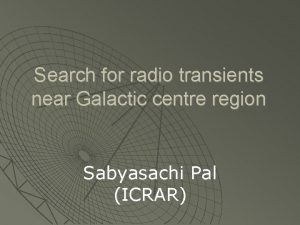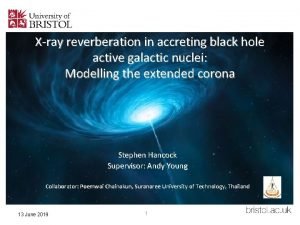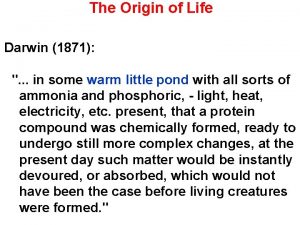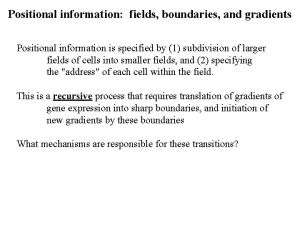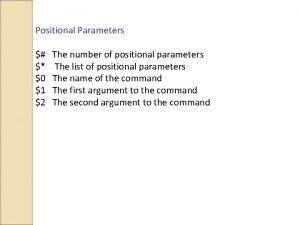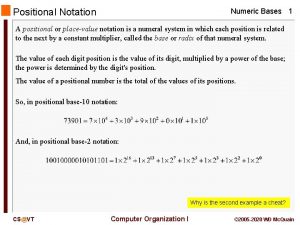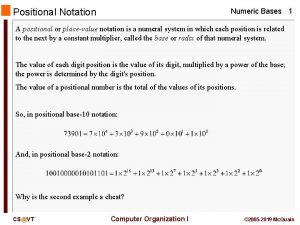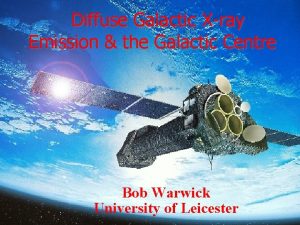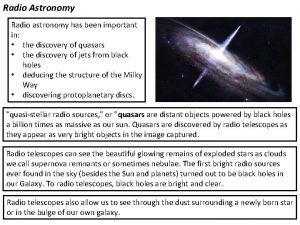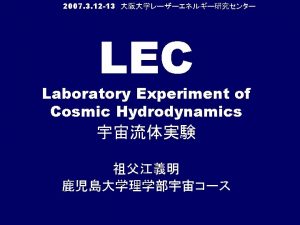Radio Astronomy Positional Astronomy And The Galactic Centre















![Transformation Equations tan(Az) = sin(H) / [sin(H)sin(f) - tan(d)cos(f)] Ø sin(Al) = sin(f)sin(d) + Transformation Equations tan(Az) = sin(H) / [sin(H)sin(f) - tan(d)cos(f)] Ø sin(Al) = sin(f)sin(d) +](https://slidetodoc.com/presentation_image_h2/454372813067cbd9b0529e6e2d7445c1/image-16.jpg)


- Slides: 18

Radio Astronomy, Positional Astronomy And The Galactic Centre Jess Broderick Supervisor: Dr George Warr

Outline Ø What do we find at the Galactic Centre by studying it at radio wavelengths? Ø How do we know where to point our radio telescopes to observe the Galactic Centre? Ø Discussion of the results obtained.


Sgr A - 21 cm wavelength radio continuum image


Sgr A* Diameter upper limit = 3 billion km. Ø Mass = 2. 6 million solar masses. Ø Strong evidence that Sgr A* is a gigantic black hole! Ø Source of radio emissions is nonthermal synchrotron radiation. Ø

Celestial Coordinate Systems Equatorial coordinate system Ø Horizon coordinate system Ø Ø Can convert between these respective coordinate systems.

Equatorial Coordinate System

Equatorial Coordinate System North Celestial Pole

Horizon Coordinate System

Horizon Coordinate System North Celestial Pole

Converting Between Coordinate Systems 1. Aim is to obtain the azimuth and altitude of the Galactic Centre at a particular time and location, from the known right ascension and declination values. RA= 17 h 45 m 40 s DEC= -29° 0’ 28” (J 2000) 1. Need a variety of parameters to allow for an accurate transformation.

Precession Ø RA = RA(2000) + (3. 075 +1. 336 ysin(RA)tan(Dec)) Ø Dec = Dec(2000) + 20. 04 ycos(RA) Ø y = years from 1 January 2000

Nutation delta RA = (0. 9175+0. 3978 sin(RA)tan(Dec))d. L d. Ecos(RA)tan(Dec) Ø delta Dec = 0. 3978 cos(RA)d. L + d. Esin(RA) Ø delta RA and delta Dec are added to the mean coordinates to obtain a more accurate set of coordinates. Ø

Parameters Required Corrected Right Ascension and Declination values Ø Latitude and Longitude of observer Ø Date, Universal Time Ø Julian Day Ø Local Sidereal Time Ø Local Hour Angle Ø
![Transformation Equations tanAz sinH sinHsinf tandcosf Ø sinAl sinfsind Transformation Equations tan(Az) = sin(H) / [sin(H)sin(f) - tan(d)cos(f)] Ø sin(Al) = sin(f)sin(d) +](https://slidetodoc.com/presentation_image_h2/454372813067cbd9b0529e6e2d7445c1/image-16.jpg)
Transformation Equations tan(Az) = sin(H) / [sin(H)sin(f) - tan(d)cos(f)] Ø sin(Al) = sin(f)sin(d) + cos(f)cos(d)cos(H) Ø f = Latitude of observer Ø d = Declination Ø H = Local Hour Angle Ø


Summary Main radio source at the Galactic Centre is Sgr A. Within Sgr A, Sgr A* is the most intense radio emitter. Ø Needed to convert the right ascension and declination of the Galactic Centre to its altitude and azimuth at a given location and time. Ø Radio source was detected. Ø
 Galactic centre radio transients
Galactic centre radio transients Learning astronomy by doing astronomy activity 1 answers
Learning astronomy by doing astronomy activity 1 answers Learning astronomy by doing astronomy activity 1 answers
Learning astronomy by doing astronomy activity 1 answers Learning astronomy by doing astronomy
Learning astronomy by doing astronomy Netherlands institute for radio astronomy
Netherlands institute for radio astronomy Radio astronomy lectures
Radio astronomy lectures Superior and inferior
Superior and inferior Positional and directional terms
Positional and directional terms Positional and directional terms
Positional and directional terms Statics
Statics Slidetodoc.com
Slidetodoc.com Awin radio
Awin radio Glorck
Glorck Galactic city model
Galactic city model Combine vs galactic empire
Combine vs galactic empire What are the 3 models of urban structure?
What are the 3 models of urban structure? Urban realms model
Urban realms model Reverberation
Reverberation Galactic habitable zone
Galactic habitable zone
